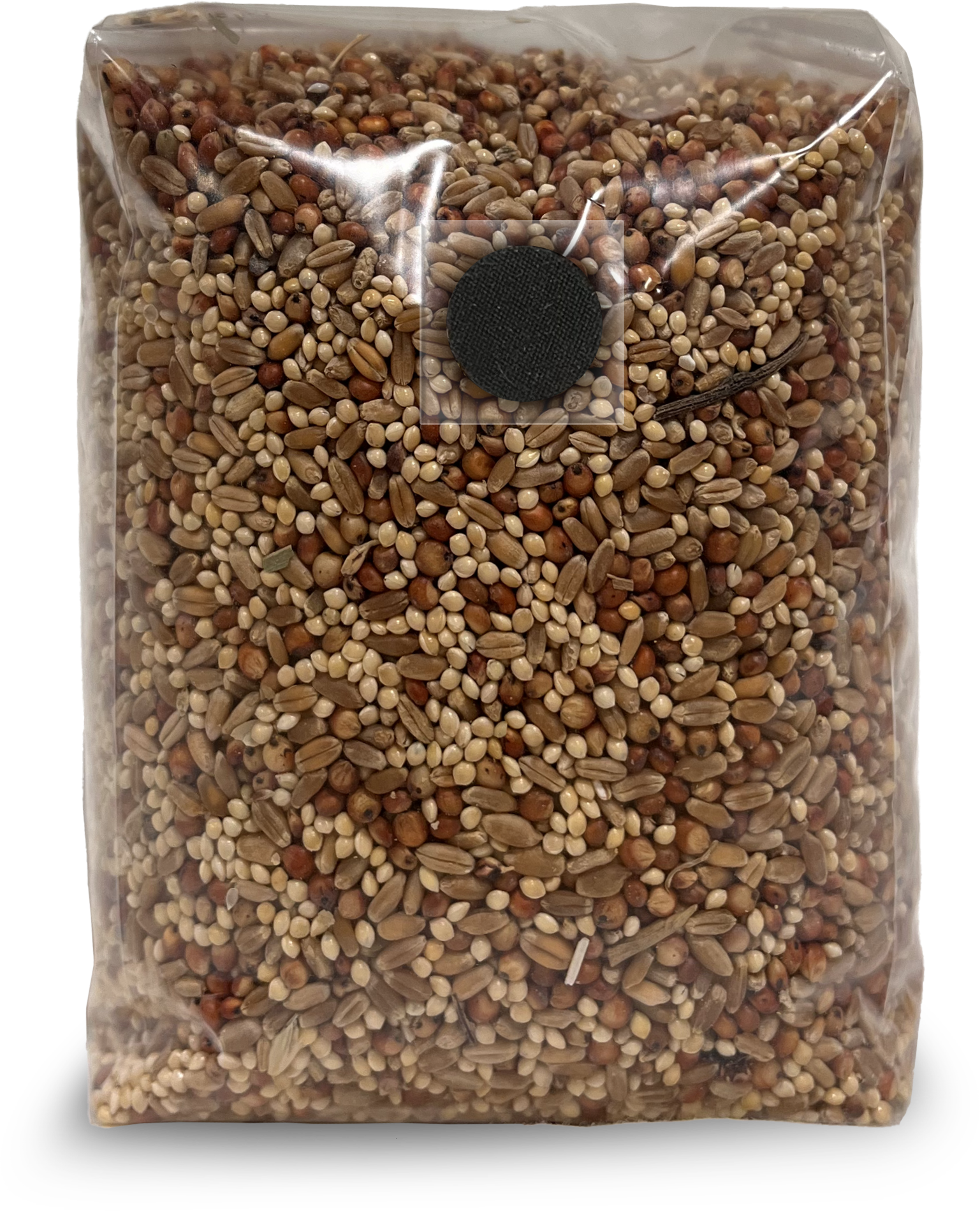
Fast-Colonizing Sterilized Grain For Mushroom Spawn
Quick Colonization! We’ve specially chosen the best grain mix for rapid mycelial growth! They've been fully hydrated in a nice warm bath of gypsum for a calcium boost and a little help to avoid clumping.
Perfect for use in mono tubs or larger bags of substrate.
- Wheat: The big soft sexy all-American grain. Mycelium love these nitrogen rich amber waves of goodness, and will colonize wheat, and in turn, the rest of the grains insanely fast. Once hydrated, this grain turns into a soft mass of easily digestible deliciousness for rapid mycelium growth. Looking fiiine, wheat. Looking fine…
- Milo: The Goldilocks of the three grains. Milo is the mid-size grain, which is good when it comes time to mix the colonized grain with your substrate, because the smaller milo grains will spread out to more locations in the substrate than the bigger wheat grains, and in turn, inoculate more areas of the substrate and speed time to full colonization and fruiting (i.e. faster time to that mushroom goodness). Milo’s also middle of the road in terms of nitrogen content and contamination possibility. Go milo, go!
- Millet: The baby. Millet is the tiniest of the three, making it also the grain that spreads out to most places in your substrate, giving even more inoculation points and speeding up substrate colonization even further. And though millet isn’t as nutritious as the first two grains, normally making grain colonization a bit slower if it was hanging out in that bag all by itself, having that wheat and milo just getting destroyed by mycelium right next to the millet helps kick start millet’s role in the first stage of this game. Oh you thought the mycelium would leave you alone for a little bit longer, millet? No man, no. They’re next door and headed your way.
- A note on Rye: We don't use rye. Rye is great. It’s loaded with nutrition for mushrooms. And they love that crap. But you know who else loves all that nutrition… That’s right… Contaminants. They gobble it up too. So you dangle that sweet sweet rye berry out there, and you’ve gotta really make sure that your little plastic house stays clean. Because they can smell that yummy food and they want in. Speaking of which, maybe this is a good time to talk about how we clean that house up…
Sterilization: So we’re not gonna tell you how long we sterilize these bags, but suffice it to say that anything in those bags is gonna get annihilated. We nuke that bag, and we nuke the crap out of it. If anything actually manages to survive our sterilization process, watch out, because it’s taking over the world, and we’re really sorry about that armageddon we’ve initiated.
Air filter: These bags need to breathe a little. Just a little. They really don’t need much. We use a 0.2 micron filter patch. Which is really the perfect amount of air. Why use a 0.2 micron filter, you ask? Well I’ll tell you… Bacteria can get as small as 1.0 micron (e.g. sour rot), and mold can get down to 2.0 microns (e.g. green mold or cobweb mold). Having a 0.2 micron gate that’s less than a fifth the size of these nasty fellers keep them looking in from the outside on the paradise they wish they had. Good luck squeezing into this fortress! Now contamination does happen. Filters do generally begin to get overwhelmed over time, and it’s always a part of growing mushrooms, but the force is strong with this one.

